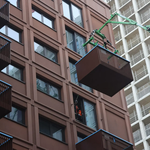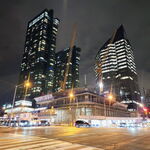scarberiankhatru
Senior Member
I don't particularly like the fancy stone veneer. I like the idea of it but part of me still says "Eww" whenever I see it.
Mike in TO, you're definitely right about most condos. It is a fact, however, that the architects of OCAD and the ROM, for example, used different materials for cost reasons than what the architects had originally recommended.
"The use creates the aesthetic effect. There are no diktats concerning forbidden colours, textures, materials or combinations thereof that any artist will pay the slightest attention to if they can possibly help it." - Urban Shocker
Glad to finally hear an argument from your end concretely validating relativistic extrapersonal hermetic contextualism, both as perceived and as measured, as the primary generator of meaning in architecture, disallowing any one single opinion or viewpoint or type of interference that would compromise or attempt to reduce these inherent complexities, and remove the experience from one of art into one of mere building. Or as badly, a crass attempt at literalized simplified or contrary theory or opinion.
Glad to know that with your above statement, you are admitting the supremacy of the subjective - and that future judgements regarding the veracity, worth or aptness of new buildings, their content, look or function can be seen if as not fallicious, at least not wholehearted. At last.
Don't mind me - just a bit of gas.




